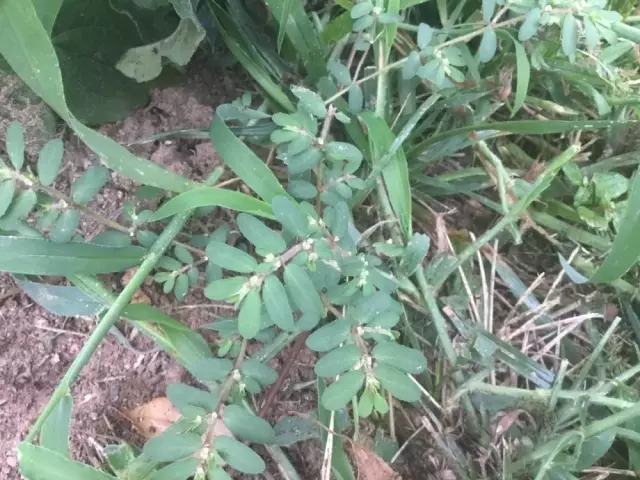- Author Rachel Wainwright [email protected].
- Public 2023-12-15 07:39.
- Last modified 2025-11-02 20:14.
Pallas spurge
Instructions for use:
- 1. Description
- 2. Application history
- 3. Chemical composition
- 4. Medicinal properties
- 5. Side effects and contraindications for use

Pallas' (or Fischer's) spurge is a perennial herb belonging to the Euphorbia family.
Description
The plant has a highly developed root system, roots are sinuous, thick, succulent. Stems reach a height of 25 cm, often pubescent. The leaves are dense, green with a brownish tint, and their shape depends on their location on the stem. The flowers of the plant are collected in umbrella-shaped inflorescences. The plant blooms in May. The fruit is a three-root.
All aerial parts of Pallas milkweed secrete milky juice.
The plant is strictly endemic. You can meet him only in Transbaikalia, China and Mongolia. Grows on steppe slopes, prefers crushed stone and rocky soil. This plant is listed in the Red Book of the Chita Region.
The history of the use of milkweed Pallas
There is a version that this plant is the very medieval mandrake. In the ancient recipe book on Tibetan medicine, recipes from which have been used since the time of Genghis Khan, reviews of Pallas milkweed are found as a laxative and anthelmintic agent.
Siberian healers and herbalists even in ancient times treated tuberculosis, tumors and male illnesses with this plant.
It was believed that Pallas milkweed root gives vitality and prolongs youth.
For medicinal purposes, the root of the Pallas milkweed is used, which is dug out during the wilting of the plant.
Chemical composition
The plant root contains phytosteroids, alkaloids, bitterness, glycosides, toxins, ascorbic acid, tannins, resins, saponins.
All parts of the plant contain selenium.
Medicinal properties of Pallas milkweed
Unfortunately, in scientific medicine, the medicinal properties of Pallas milkweed are not used today. Nevertheless, active research is underway to study the properties and composition of the plant. It has already been scientifically established that plant-based preparations can restore hormonal metabolism in the male body, due to the presence of phytoandrogens in the plant. The anticoagulant activity of this plant has been established, which makes it possible to use it in the future for the treatment of patients with hemocoagulation disorders. The immunomodulatory property of Pallas milkweed has been proven - the plant promotes tissue healing.
The presence of selenium in the plant makes it possible to use it to stimulate blood circulation. Plant-based preparations kill fungal flora and protozoa. And the presence of lactones in the roots makes it possible to suppress the growth of tumor cells in the body.
Reviews of Pallas milkweed indicate that it is successfully used in folk medicine for the treatment of malignant tumors of a different nature, including leukemia.

In China, doctors, thanks to the medicinal properties of Pallas milkweed, heal tuberculosis of the lymphatic and skeletal systems. In Tibet, a decoction from the roots is used to cure anthrax.
Reviews of Pallas milkweed herbalists indicate that it can be used not only for diseases of the male reproductive system (infertility, erectile dysfunction, prostate adenoma, prostatitis), but also for mastopathy and uterine myoma in women.
Another indication for taking drugs from this plant is anemia of various origins, as well as changes in the blood after chemotherapy and radiation therapy in oncological practice. The roots of the plant are also used to treat infectious diseases, diseases of the stomach and lungs.
With lymphadenitis and lymphangitis, external lotions are made from a decoction of Pallas milkweed roots.
Side effects and contraindications for use
With individual intolerance, you should not take preparations from the plant. In addition, the plants are poisonous, so in case of an overdose, cardiac arrhythmias, loose stools mixed with blood and vomiting are possible.
Information about the drug is generalized, provided for informational purposes only and does not replace the official instructions. Self-medication is hazardous to health!






